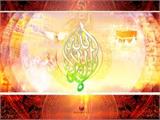www.mingyihui.net Duodenal Ulcer Medical Treatment Guide (Introduction)
A Guide to Seeking Medical Care for Duodenal Ulcer (Introduction) http://www.mingyihui.net/article_481.html What is duodenal ulcer? Duodenal ulcer (duodenal ulcer, DU) is one of the common chronic diseases, which is caused by multiple factors leading to defects in the mucosal layer and muscle layer of the duodenum. What are the early symptoms of duodenal ulcer? Pain is the prominent symptom of duodenal ulcer disease. At least 90% of cases have pain manifestations, and online appointment registration is available. Some patients have no pain but feel discomfort in the upper abdomen. A few patients may have no symptoms at all, known as asymptomatic ulcers. About 10% of patients, the first sign of ulcer disease is vomiting blood, black stool or both. In extremely rare cases, the first symptom of ulcer disease is acute perforation.
(1) Location and radiation of pain: The pain of duodenal ulcer is located between the xiphoid process and the umbilicus, mostly in the upper abdomen, close to either side of the midline, usually on the right side. The range of pain is often very limited, and patients can often clearly point out the painful area with one or two fingers, with a diameter of about 2-10 cm.
Some patients with duodenal ulcer may have atypical locations of pain. Sometimes the primary location of pain is in the upper right abdomen rather than in the upper abdomen near the midline, which is more common in post-bulbar duodenal ulcers or penetrating ulcers involving the liver, pancreas, gallbladder, or gastrophrenic ligament. Occasionally, the pain is located between T7-T12 on the midline of the back, while the upper abdominal pain is extremely mild or absent. This location of pain is most commonly seen in posterior penetration of ulcers. In individual duodenal ulcer patients, the pain is located below the umbilicus, in the lower right abdomen. The cause of such an unusual pain location is still unclear, and it may be the result of enhanced gastric ileal reflex accompanied by dysfunction of the ileocecal sphincter movement.
The pain of duodenal ulcer can radiate from the middle of the upper abdomen to other areas, such as the back, rib edge, and chest. The radiation of pain depends on the following factors:
① Intensity of stimulation: Enhanced stimulation can cause referred pain, and the most common reason for enhanced stimulation is deep penetration of ulcers and obvious inflammatory reactions around the ulcers.
② Patient's sensitivity: Increased patient's sensitivity to pain can lead to extensive referred pain.
③ Contact and adhesion of ulcers with other organs: Pain radiating from the upper abdomen to the back often indicates that the ulcer has penetrated through the serosa and adhered to the pancreas. When the ulcer perforates and adheres to the liver and gallbladder, the pain radiates to the upper right abdomen and back.
(2) Nature and intensity of pain: The nature and intensity of pain in patients with duodenal ulcer vary greatly. The patient's sensation may not be real pain, but a "pressure", "stuffy feeling", and "burning sensation". Sometimes the patient's sensation is difficult to distinguish from hunger. Even if the patient feels pain without complications, it is often not severe pain, but "dull pain" and "dull ache".
The nature and intensity of pain in patients with duodenal ulcer are influenced by some factors. The size of the ulcer has less effect. There is no clear relationship with the level of gastric acid. The patient's pain threshold and reactivity to pain are the two factors that have a greater impact, and they largely change the nature and intensity of ulcer pain. The pain threshold varies from person to person; the reactivity to pain not only differs greatly between individuals, but also varies greatly at different times in the same patient. Involvement of the serosa is an important factor. When the ulcer penetrates through the serosa, the pain is severe and persistent. The occurrence of complications often changes the nature and intensity of ulcer pain. For example, after bleeding, the pain often subsides, the pain during acute perforation is extremely severe, and when obstruction occurs, the typical fasting pain is often replaced by fullness or spasmodic pain in the upper abdomen.
(3) Rhythmicity of pain: Another characteristic of duodenal ulcer pain is its fixed relationship with eating. Pain often occurs when the stomach is empty, i.e., around 11:00 am and 16:00 pm, and disappears after meals. Therefore, the pain of duodenal ulcer occurs before meals. The disappearance of pain after meals is due to the buffering of acid by food. Nighttime pain is quite common, and patients often wake up due to pain between 1:00 and 2:00 am, and slightly eating or taking antacids can relieve the pain. Pain rarely occurs when getting up in the morning. The gastric secretion of patients with duodenal ulcer is generally highest at night, peaking between 1:00 and 2:00 am, after which the gastric secretion decreases. It reaches the lowest level between 6:00 and 7:00 am. This may be the reason why patients with duodenal ulcer often experience nighttime pain and are often awakened by pain between 1:00 and 2:00 am.
If a patient with duodenal ulcer loses his previous pain rhythm during an ulcer episode, it should be regarded as a bad sign, indicating that the ulcer has penetrated deeply into the serosa. Or there are complications, such as perforation and obstruction. When duodenal ulcer is accompanied by chronic gastritis, the pain lacks typical rhythmic characteristics.
(4) Periodicity of pain: This is another characteristic manifestation of duodenal ulcer. So-called periodicity refers to the fact that the symptoms of duodenal ulcer appear every day, lasting for several days, weeks or months, then relieved, and recur after several months to several years. The recurrence of duodenal ulcer often occurs in spring and late autumn, and it is not uncommon for the entire winter to recur. Most patients feel good in summer. For such seasonal factors of duodenal ulcer recurrence, there is currently no reasonable explanation. The periodic characteristics of duodenal ulcer have no definite relationship with the level of gastric secretion. Duodenal ulcer occurs in various regions of the world, thus excluding the influence of climatic factors. In addition to seasonal factors, other common recurrence factors include fatigue, emotional tension, anxiety, respiratory infection, improper diet, excessive drinking, use of ulcerogenic drugs, etc. With the passage of time, the frequency, severity, and duration of ulcer pain attacks have increased; patients may have significant pain almost every day. The disappearance of this periodicity is often seen in penetrating and obstructive ulcers. However, some patients gradually reduce their recurrence, gradually reduce the severity, and finally completely recover from the disease.
(5) Long-term nature of pain: As mentioned above, duodenal ulcer has the characteristics of repeated attacks and spontaneous relief, so the disease lasts longer. Most patients seek medical care with a history of several months, years, or even more than 20-30 years.
(6) Causes of pain: The pain of duodenal ulcer is caused by hydrochloric acid in the gastric contents. Acid causes chemical inflammation, thereby lowering the pain threshold of nerve endings at the edges and base of the ulcer. Vascular congestion further lowers the pain threshold. In uncomplicated ulcers, the pain belongs to true visceral pain, and the pain sensation comes from the lesion and is transmitted to the central nervous system via visceral nerves. Abnormal motility, enhanced peristalsis, or increased intragastric pressure are not the causes of ulcer pain, but enhanced peristalsis or muscle spasm can aggravate the pain. The disappearance of pain after the use of antimuscarinic drugs cannot be attributed to the inhibition of the vagus nerve or the reduction of gastrointestinal motility, but rather to the delayed gastric emptying so that hydrochloric acid cannot reach the ulcer.
2. Other symptoms In most patients with duodenal ulcer, the aforementioned typical ulcer pain is the only main symptom. However, patients with duodenal ulcer may also exhibit some other symptoms. Now we will briefly describe the important ones.
(1) Acid reflux and water brash: Some patients with duodenal ulcer can repeatedly regurgitate large amounts of acidic gastric juice without food, known as acid reflux. Patients with duodenal ulcer may also experience water brash, where large amounts of watery saliva rapidly surge into the mouth, which is a manifestation of enhanced vagus nerve activity.
(2) Heartburn: Heartburn, or a burning sensation behind the sternum, is an extremely common symptom in patients with ulcers. Its occurrence may be due to the reflux of acidic gastric juice into the esophagus causing irritation, or it may be the result of reflexive esophageal spasm. Sometimes there may be reflux of acidic gastric juice into the mouth during heartburn.
(3) Appetite and weight: Patients with duodenal ulcer usually have a good appetite, and often increase their weight because of frequent eating to relieve pain. However, when chronic duodenal obstruction occurs, the weight may decrease.
(4) Colonic symptoms: Many patients with duodenal ulcer are accompanied by irritable bowel syndrome. These patients may present with constipation and left lower abdominal pain. The pain is continuous or colicky, and relieves after defecation.
(5) Anemia symptoms: Patients with duodenal ulcer sometimes develop anemia and weakness due to chronic bleeding from ulcers.
Patients with uncomplicated duodenal ulcer have poor physical signs, and even during active periods, physical examination may reveal no positive findings. The common positive physical sign is localized mild tenderness in the upper abdomen, especially on the right side of the midline. When there is more inflammatory response around the penetrating ulcer, the range of tenderness may be larger, and even abdominal muscle tension may occur, and a tender mass can be palpated in the upper abdomen. In active gastric and duodenal ulcer disease, especially in cases with posterior wall confined perforation, tender points (Boas' tender points) may appear on the left or right side of the spinous processes of thoracic vertebrae 10, 11 or 12. However, Bockus found that the position of the back tender points was often higher, often between thoracic vertebrae 6-10. Tender points in the buttocks (Ono Temple buttock tender points) may also appear on the left or right side in patients with active gastric and duodenal ulcer disease. Similar tender points in similar locations may also appear in other diseases of the upper abdomen, such as acute episodes of gallbladder disease, so the diagnostic significance is small.
Typical rhythmic and periodic upper abdominal pain is an important basis for diagnosing ulcer disease, but it should be noted that more than 10% of ulcer patients may have no symptoms. In addition, although patients with chronic gastritis have upper abdominal pain symptoms similar to those of ulcer disease, there are no ulcers. Pain attacks may last for several days to several weeks or months. Symptoms are prone to recur, and duodenal ulcers often recur without pain or complications. The relief cycle is usually several months or years, almost always longer than the time of attack pain. However, in some patients, the pain is more aggressive, with frequent and persistent attacks or complications. Changes in the nature of ulcer pain may be a signal of complications. For example, if ulcer pain becomes persistent, no longer relieved by food or antacid medications, or radiates to the back, it may indicate penetration (often posterior penetration to the pancreas).
Many active duodenal ulcers have no ulcer symptoms. Upper gastrointestinal endoscopy shows that nearly half of recurrent duodenal ulcers are asymptomatic. Endoscopy also shows a lack of good correlation between ulcer activity, symptom relief, and ulcer healing. The absence of ulcer pain does not exclude duodenal ulcer. Duodenal ulcer is a potential cause of acute or chronic gastrointestinal bleeding, pyloric obstruction, or ulcer perforation.
Finding a duodenal niche shadow on X-ray barium meal examination can serve as the basis for diagnosing duodenal ulcer. Endoscopic examination is the most important diagnostic method, and biopsy of the antral mucosa can be used for HP testing. Gastric acid determination is meaningful in diagnosing gastrinoma, but has little diagnostic value for duodenal ulcer.
http://www.mingyihui.net/article_481.html



